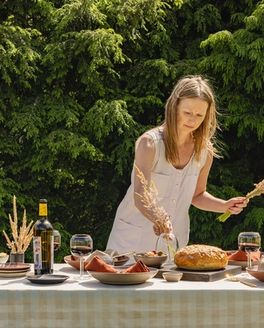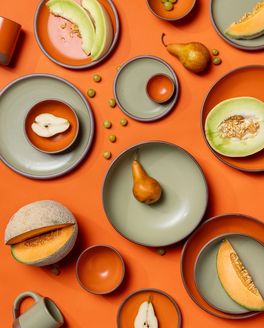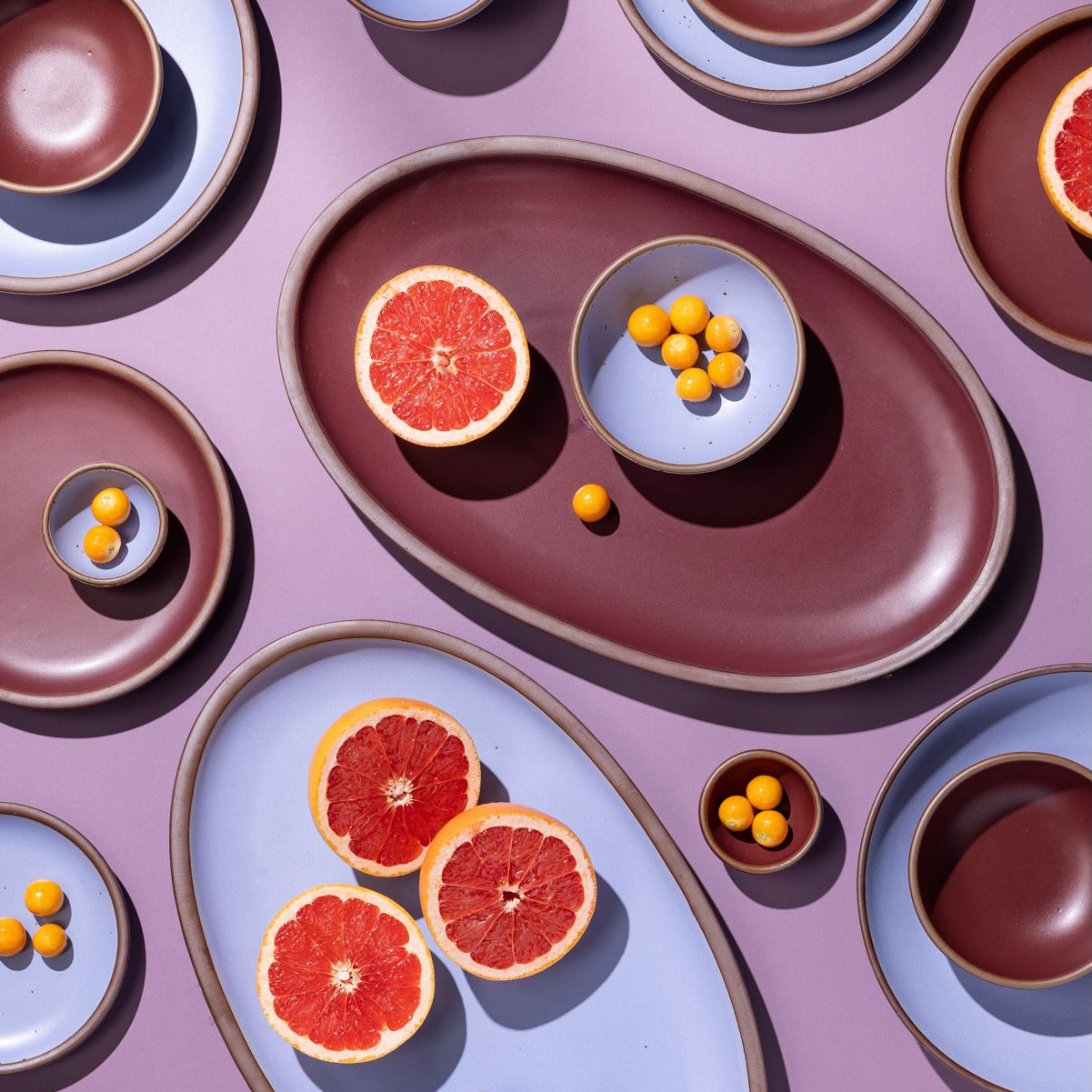
Serving up Design on a Platter
In 2014, our founders began designing the forms that would become the beloved dinnerware collection we make and sell today. While everything was still thrown by hand and fired in a wood kiln back then, Alex Matisse and John Vigeland envisioned scaling their early endeavors to an industrial level. Thus began the search for machinery that would lead East Fork to become the bustling ceramic dinnerware manufacturer it is today.
Fast forward to 2022: We were making thousands of pots daily, but one central form was still missing from every classic dinnerware collection—the Oval Platter. At that time, all of our forms and processes were built around circular pieces, and oval-shaped forms introduced complexities to an already well-tuned and efficient factory.
The challenge was set, and we have been on a two-year journey to develop large oval platters ever since. After all, we can’t resist epic presentations of whole red snapper fresh off the grill.
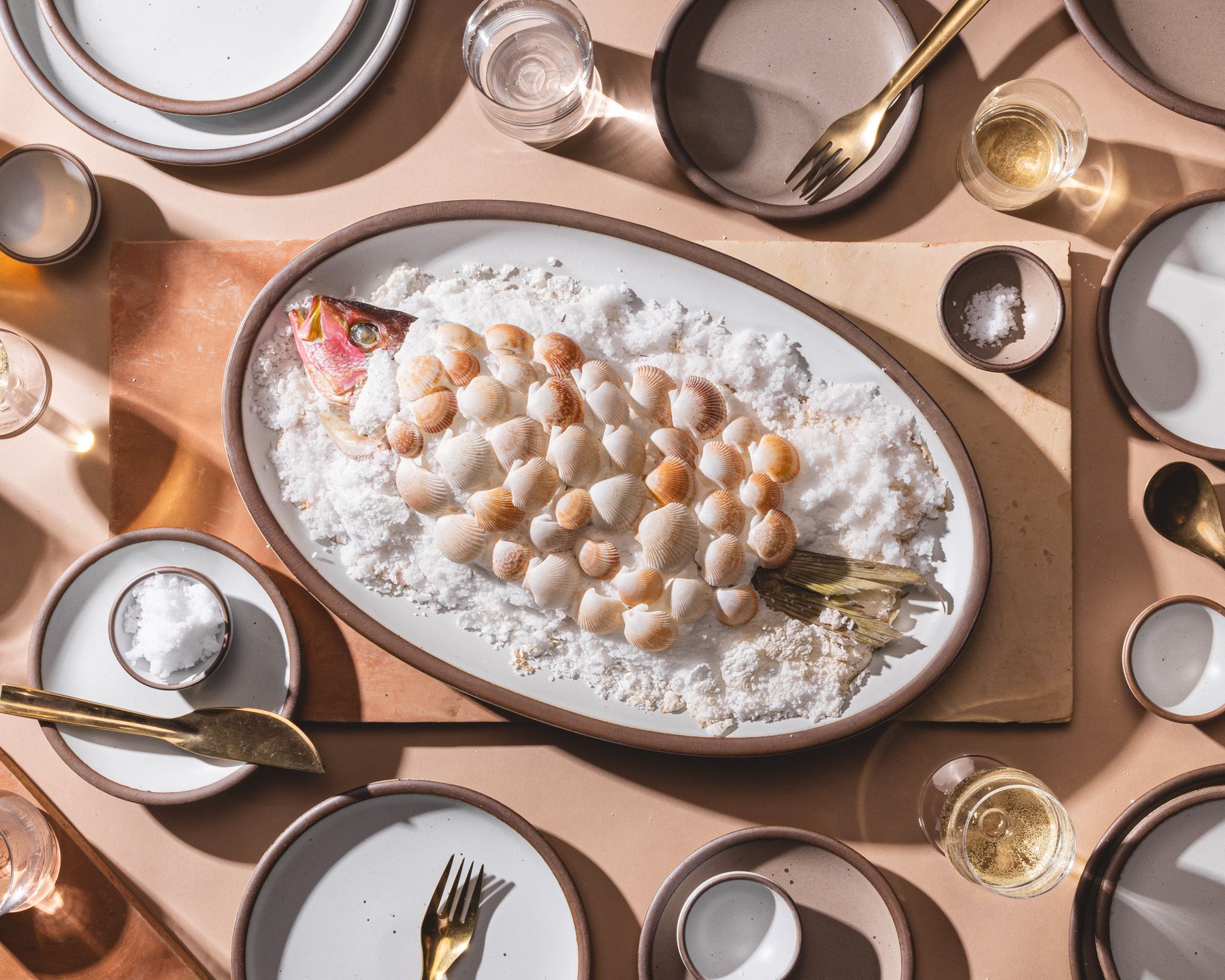
Entertaining, family-style and holiday meals all beg for oval platters. The form fits in easily between other pots on a crowded table, and it anchors formal place settings, weeknight dinners, or casual countertop gatherings. We had to put our stamp on one.
Getting Started
Alex met with James, our expert Mechanical Engineer, and they got to work. Development in general can take anywhere from a few months to a year depending on the new form’s complexity, whether it's a kind of shape we've made before, and if we need to use new processes to make it.
Everyone involved testified: This one definitely took on the longer end to develop. Eventually, we rolled out the Oval Platter with our second Momofuku collaboration in June 2023, first as a limited test run, but it proved so popular that we continued rolling it out for special releases.
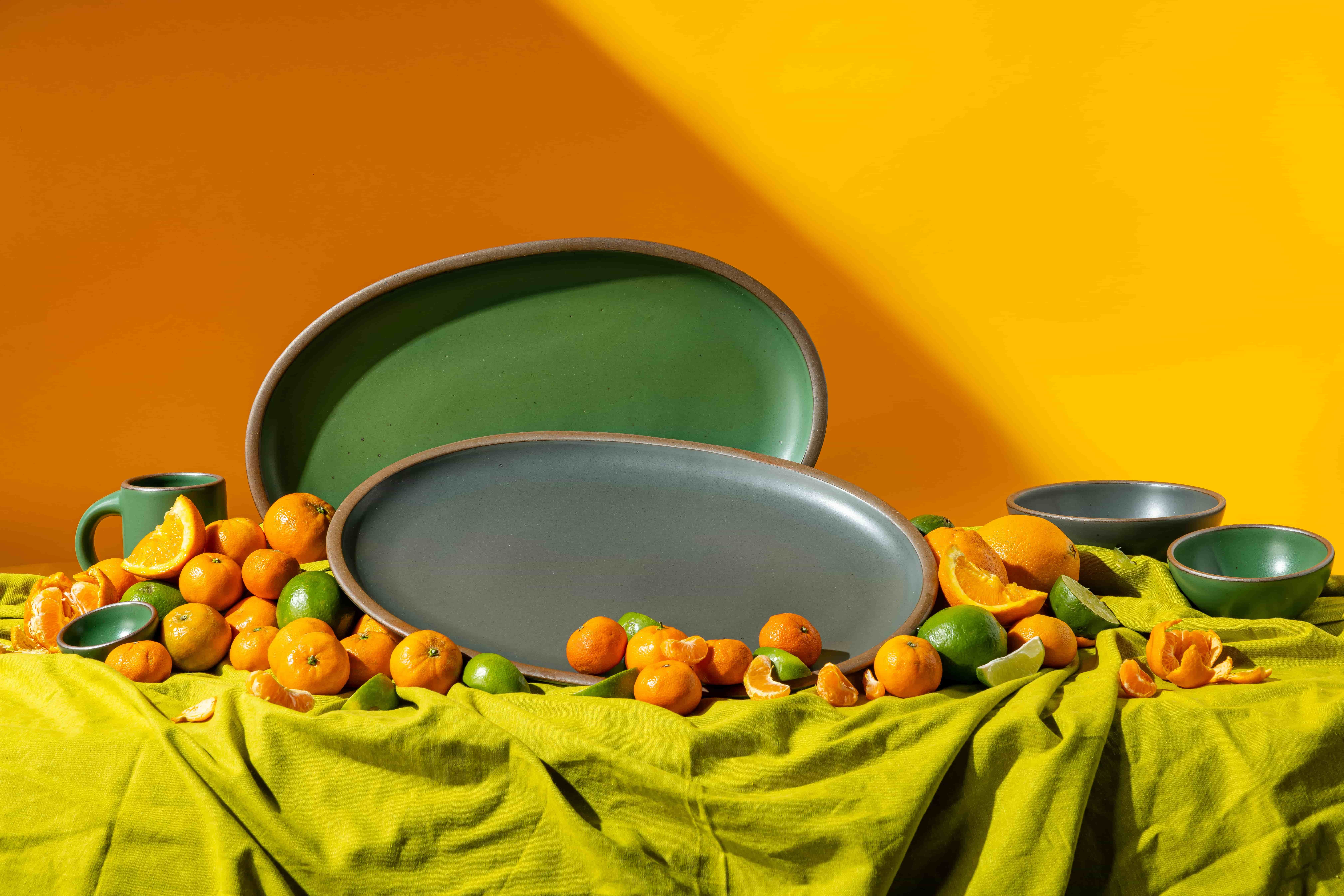
Now, we’ve started toying with keeping it in stock in core collection colors, Eggshell and Morel, but a whole lot of testing and prototyping had to come first.

The Oval Platter’s profile follows the same profile of our plates but stretched out to create greater surface area. First, James went through rounds of making 3D computer models and full scale prototypes to get the design just right, attempting to account for the shrinkage, warping, and trimming that are all part of the process when working with clay and kilns.
The final form measures 18.5 inches long, 11.75 inches wide, and 1.5 inches in height, and weighs a little over 4 lbs, which, we think, nails it. A bit of heft, substantive elegance—this is what we wanted for our tables and for yours.
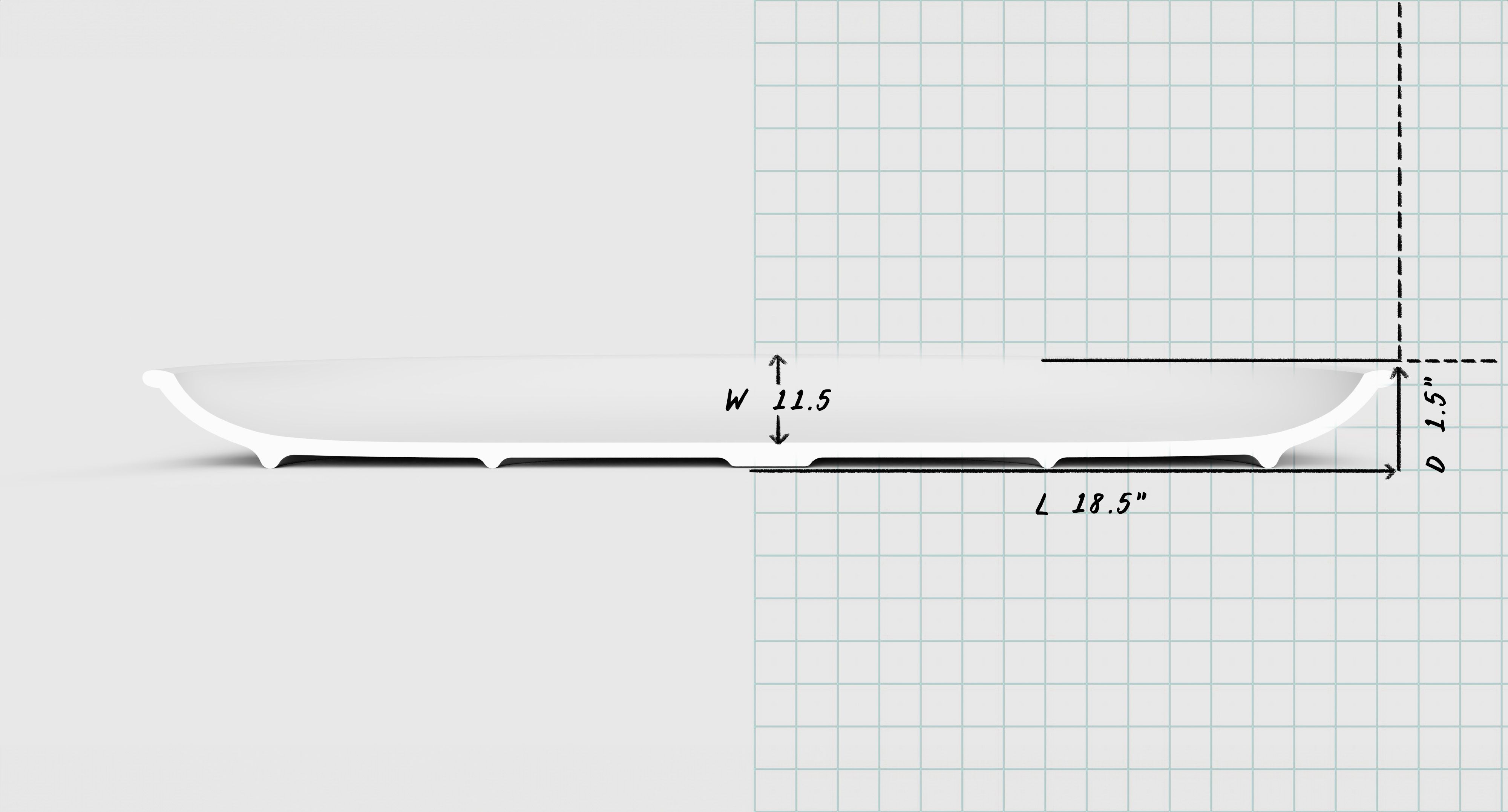
Once Alex and James settled on the platter’s design, James created models that would be used as master molds for the machine (in this case, a RAM Press) that makes the Oval Platter. Using a type of cutting controlled by a computer called CNC, James replicated the platter’s exact shape in high density foam before passing it off to our Mold Shop. Then, the Mold Shop used James’ foam models to make dies for the RAM Press.
Little Diversions
Two fun facts: 1) CNC technically stands for "computer numerical control,” but is colloquially used to describe any kind of computer-based cutting, which is often by laser, but it can also refer to drilling, lathes, or routers and more.
2) RAM Presses are machines that were invented in the 1940s, in Columbus, Ohio. It presses clay into shapes like plates and bowls and has two molds, one that forms the top of the piece and the other, the bottom. It gets its name from movement of the molds pressing the body into the required shape.
“The RAM Press used to make the Oval Platter uses a whopping 135 tons of force,” Emilja, our Production Scheduler, mentioned. “We also have two 30-ton presses that we use for The Mug handles and Bitty Bowls. All of our other machines are rotation-based, which we obviously can't use for an oval-shaped piece! So, anything irregular has to be made on the RAM Press.”
Big Challenges
Once the tooling process was complete in the Mold Shop, creating that first run of Oval Platters followed a similar process to our other product journeys, from drying to glazing to firing. But, because of the platter’s size, a lot of things can go wrong—anytime things get big in clay, that’s just the way of it. There’s exponential opportunity for surface flaws like stippling, streaks, iron burnout and bloating. The Oval Platter is also prone to cracking at the foot ring.
One of the biggest differences between the Oval Platter and our other forms is the process of trimming. The clay is spun gently with one hand while the other hand trims the edge. It’s a much more laborious and time consuming effort since an oval shape can’t spin quickly in a circle like our other forms. The precision required is difficult to master, but our Team embodies the grit and determination needed to do it, again, and again, and again.
“The Oval Platter is an impressive piece,” Alex noted, “and a testament to how far we have come.”
At the Table
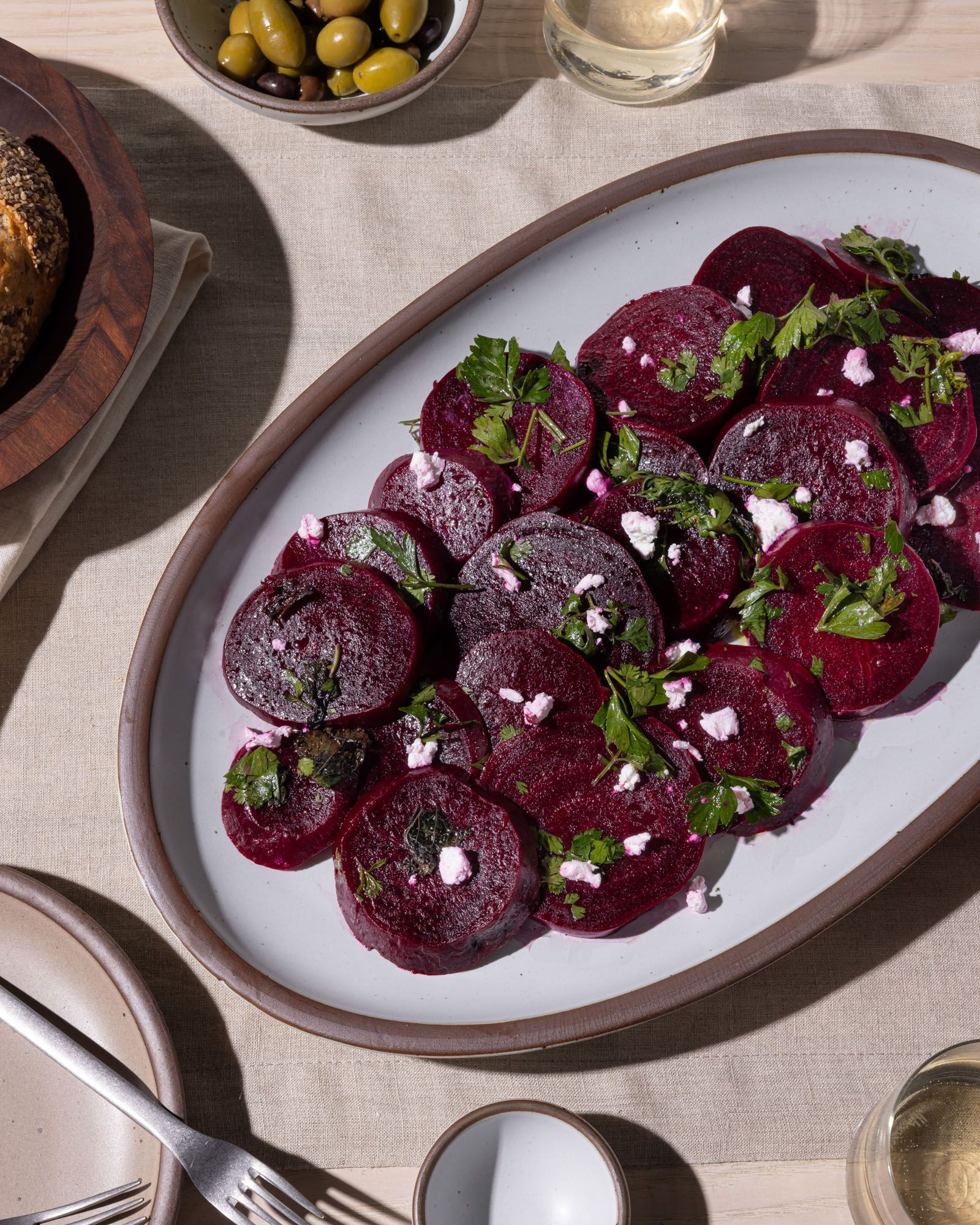
Alex isn’t likely to stop having ideas, and we’ll continue to experiment with making new forms! We’re always here in service of the functionality, beauty, and durability your tables deserve.

